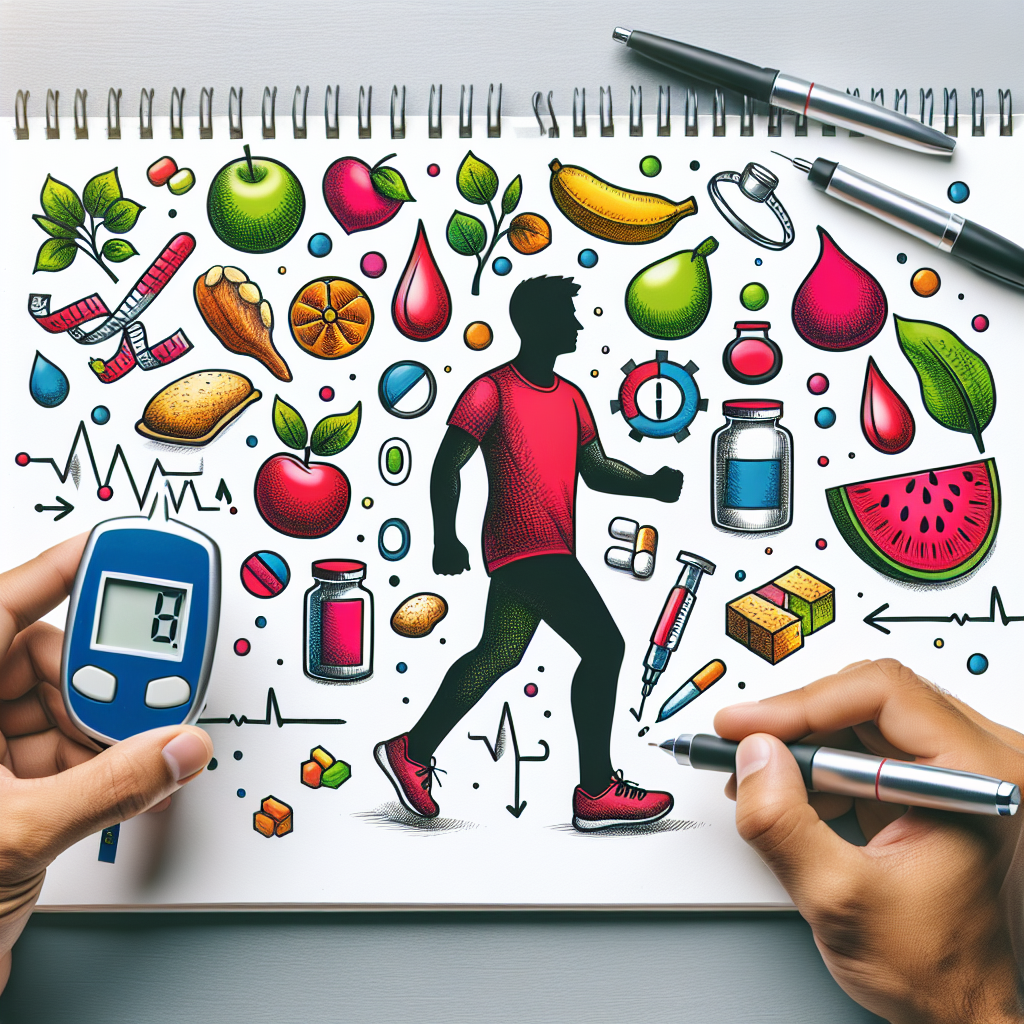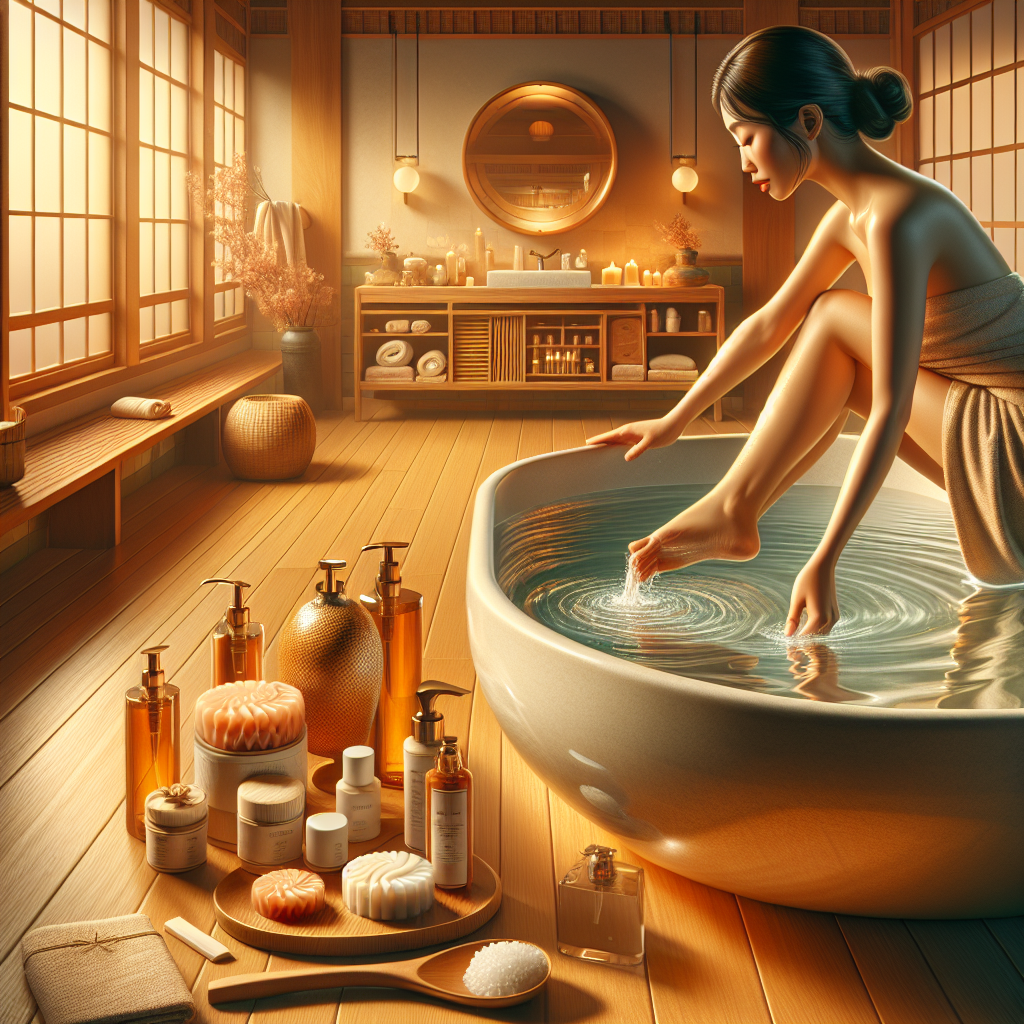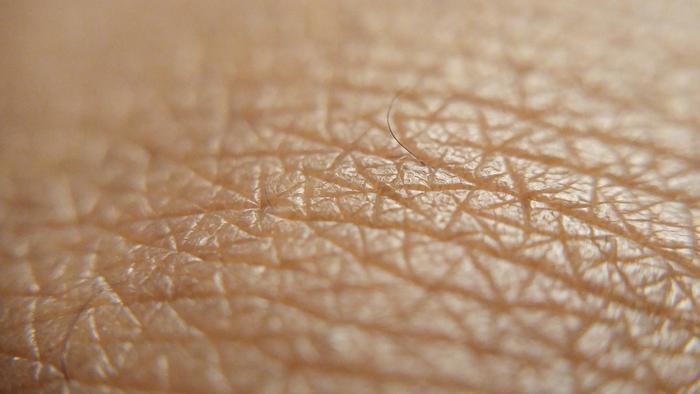
Living with diabetes can sometimes feel like a full-time job. You’re constantly monitoring blood sugar levels, planning meals, and staying active. But there’s another aspect of your health that shouldn’t be overlooked: your skin. Diabetes can cause your skin to become dry, itchy, and uncomfortable. Fortunately, hydrotherapy moisturizing care offers a soothing solution to battle diabetic skin dryness.
Understanding Diabetic Skin Dryness
Before we dive into the benefits of hydrotherapy, let’s talk about why your skin might be feeling like a desert. When you have diabetes, high blood sugar levels can lead to dehydration, which in turn affects your skin’s ability to retain moisture. This can leave you with skin that feels as parched as the Sahara.
But that’s not all. Diabetes can also damage nerves and small blood vessels, which means your skin might not be getting the nourishment it needs. This can lead to a decrease in sweat production, which is your body’s natural way of keeping your skin moist.
What Causes Skin Dryness in Diabetics?
There are a few culprits behind skin dryness in diabetics:
- High blood sugar levels can cause the body to lose fluids, leading to dry skin.
- Diabetes can damage nerves, reducing sweat and oil production necessary for skin hydration.
- Poor blood circulation can make it harder for essential nutrients to reach the skin.
These factors combined can make it challenging to keep your skin hydrated. That’s where hydrotherapy moisturizing care comes in.
Symptoms to Look Out For
Now, you might be wondering what dry skin looks like. Well, it’s not just about feeling a little flaky. Here are some signs that your skin is crying out for moisture:
- Itching or irritation
- Redness or inflammation
- Cracks that may bleed
- Hard patches of skin, known as diabetic dermopathy
If you’re noticing any of these symptoms, it’s time to take action. And that’s where hydrotherapy can play a pivotal role.
The Link Between Blood Sugar Control and Skin Health
But first, let’s not forget the importance of blood sugar control. Keeping your blood sugar levels in check is vital because when they’re high, your body tries to get rid of the excess glucose through urination. This can lead to dehydration, which, as you now know, is a no-go for healthy skin.
Therefore, managing your diabetes effectively is the first step to better skin health. And when you combine this with hydrotherapy, you’re setting yourself up for success.
The Science of Hydrotherapy
So, what’s the deal with hydrotherapy? It’s not just about taking a dip in the pool. Hydrotherapy is a therapeutic whole-body treatment, which involves immersing the body in water for health benefits.
How Hydrotherapy Works to Hydrate Skin
Hydrotherapy works wonders for the skin by improving circulation and hydrating the tissues. The warmth of the water encourages blood flow, which brings nutrients and oxygen to the skin’s surface. This can help to promote healing and rejuvenation.
But it’s not just about soaking in water. The magic of hydrotherapy also comes from the products you use during the process. Moisturizing agents and emollients can be more effective when the skin is wet, helping to lock in moisture and protect the skin’s barrier.
The Role of Hydrotherapy in Wound Healing
For diabetics, wound healing can be a slow process. However, hydrotherapy can accelerate this by promoting better blood flow and keeping the skin hydrated. When wounds are kept moist, they have a better chance of healing without forming a hard scab, which can crack and lead to further issues.
Contrast Hydrotherapy: Benefits and Techniques
Besides that, there’s a specific type of hydrotherapy known as contrast hydrotherapy. This involves alternating between warm and cold water, which can further stimulate blood flow and reduce inflammation. Here’s how you can do it:
- Start with a warm bath or shower for about 3-4 minutes.
- Switch to cold water for about 1 minute.
- Repeat this cycle 2-3 times, always ending with cold water.
This method can be especially helpful if you have swelling or inflammation in your feet or legs, which is common for many people with diabetes.
Now that you’re familiar with the basics of hydrotherapy and its importance in diabetic skin care, let’s dive into practical tips for incorporating this treatment into your routine. With the right approach, you can maximize the hydrating benefits of hydrotherapy and give your skin the care it deserves.
Practical Hydrotherapy Tips for Diabetics
1. Creating a Hydrotherapy Routine at Home

Setting up a hydrotherapy routine at home is easier than you might think. You don’t need fancy equipment; your bathtub or shower can be your personal hydrotherapy station. Here’s how to get started:
- Fill your bathtub with warm (not hot) water to a comfortable level.
- Add a gentle, unscented moisturizer to the water to help hydrate your skin.
- Soak for 15-20 minutes, allowing your skin to absorb the moisture.
- After soaking, pat your skin dry with a soft towel – avoid rubbing.
- Immediately apply a diabetic-friendly moisturizer to lock in hydration.
Remember, the goal is to moisturize your skin, not to strip it of its natural oils. Therefore, avoid long, hot showers or baths, which can do more harm than good.
2. Selecting the Right Products for Moisturizing
When it comes to moisturizing products, not all are created equal, especially for those with diabetes. Look for products that are specifically formulated for sensitive or diabetic skin. These products should be:
- Free from fragrances and dyes that can irritate the skin
- Rich in emollients and humectants like glycerin and hyaluronic acid
- Designed to be absorbed quickly without leaving a greasy residue
By choosing the right products, you can enhance the effectiveness of your hydrotherapy routine and protect your skin from further dryness.
3. When to Seek Professional Hydrotherapy Treatments
If you’re dealing with severe skin issues or diabetic wounds, it might be time to consider professional hydrotherapy treatments. These treatments, often available at specialized clinics or hospitals, can provide more intensive care and are supervised by healthcare professionals.
But remember, always consult with your doctor before starting any new treatment to ensure it’s safe for you, considering your overall health and diabetes management.
Maximizing the Benefits of Hydrotherapy
1. Integrating Diet and Hydration for Optimal Skin Health
Hydrotherapy isn’t just about external care; what you put into your body matters just as much. To truly maximize the benefits of hydrotherapy, ensure you’re also focusing on a healthy diet and staying well-hydrated. Aim to:
- Drink plenty of water throughout the day.
- Include foods high in water content, like cucumbers and watermelon.
- Consume omega-3 fatty acids found in fish and flaxseeds, which can help nourish your skin.
By keeping your body hydrated from the inside out, you’ll support your skin’s hydration levels and overall health.
2. Combining Hydrotherapy with Other Skin Care Practices
Hydrotherapy is most effective when it’s part of a broader skin care regimen. Combine it with gentle exfoliation to remove dead skin cells and improve skin texture. Be sure to use a soft brush or cloth to avoid irritating your skin.
Additionally, consider using a humidifier in your home to maintain moisture in the air, especially during dry winter months. This can help prevent your skin from drying out.
3. Long-Term Skin Care Strategies for Diabetics
Managing diabetic skin care is an ongoing process. Along with regular hydrotherapy, maintain a consistent skin care routine that includes daily moisturizing and regular check-ups with your healthcare provider to monitor your skin’s condition.
And don’t forget to manage your diabetes effectively. Good blood sugar control is essential for preventing many of the skin issues associated with diabetes.
The Do’s and Don’ts of Hydrotherapy
1. Understanding Water Temperatures and Skin Sensitivity
Water temperature is crucial when it comes to hydrotherapy. Too hot, and you risk further drying out your skin. Too cold, and it may not be as effective in improving circulation. Aim for lukewarm water, which is soothing and beneficial for sensitive skin.
And always listen to your body. If you experience any discomfort or skin irritation, adjust the temperature accordingly.
2. Identifying Ingredients to Avoid in Skin Care Products
While moisturizing is key, you must be mindful of the ingredients in the products you’re using. Avoid harsh chemicals and irritants like:
- Alcohol, which can dry out the skin
- Artificial fragrances, which can cause allergic reactions
- Preservatives like parabens, which can be irritating to some people
Instead, opt for natural, gentle ingredients that will support your skin’s health without causing harm.
3. Recognizing Signs of Over-Hydration

Believe it or not, there is such a thing as too much hydration. Over-hydrating your skin can lead to issues like maceration, where the skin becomes too soft and vulnerable to infection. Signs of over-hydration include:
- Swelling of the skin
- White, wrinkly skin that doesn’t bounce back when pressed
- Discomfort or pain in the affected area
If you notice any of these signs, cut back on your soaking time and consult your healthcare provider.
Overcoming Challenges in Diabetes Skin Care
Diabetic skin care comes with its own set of challenges, but with the right knowledge and tools, you can keep your skin healthy and comfortable.
1. Dealing with Fluctuating Glucose Levels and Skin Dryness
Fluctuating glucose levels can wreak havoc on your skin, causing it to become dry and irritated. To combat this, stay vigilant about your blood sugar management and adjust your skin care routine as needed. This might mean more frequent moisturizing on days when your skin feels particularly dry.
Remember, consistency is key. By maintaining a regular skin care routine, you can help your skin stay hydrated and healthy, no matter what your glucose monitor says.
By following these guidelines and working closely with your healthcare provider, you can take control of your diabetic skin care and enjoy the soothing benefits of hydrotherapy. Keep your skin hydrated, your blood sugar in check, and your health in top condition. With dedication and the right approach, battling diabetic skin dryness is a challenge you can overcome.
2. Adapting Your Skin Care to Seasonal Changes
As the seasons change, so should your skin care routine. During the winter months, the air is drier, which can deplete moisture from your skin. To counteract this, you may need to moisturize more often and consider using a thicker cream to provide a stronger barrier against the cold. In the summer, on the other hand, you might switch to a lighter moisturizer to avoid clogging pores when the weather is hot and humid. Always pay attention to how your skin feels and looks, adjusting your routine as needed.
Additionally, don’t forget sun protection. Even though you’re focusing on keeping your skin hydrated, protecting it from sun damage is equally important. Use a broad-spectrum sunscreen with at least SPF 30, and reapply it every two hours when you’re outside.
3. Addressing Common Misconceptions About Diabetic Skin Care
There are several misconceptions about diabetic skin care that need to be cleared up. For instance, some believe that you need special, expensive products to care for diabetic skin. The truth is, what’s most important is using products that are gentle and free of irritants, which can be found at various price points. Another myth is that you can’t bathe too often if you have diabetes. The key is to bathe in lukewarm water and always moisturize afterward to prevent drying out your skin.
Some also think that if you have diabetes, you’re doomed to have bad skin. Not true! With proper care and attention, you can maintain healthy, hydrated skin. It’s all about finding a routine that works for you and sticking to it.
FAQ: Hydrotherapy and Diabetic Skin Care
Now, let’s answer some common questions about hydrotherapy and diabetic skin care to help you better understand how to maintain healthy skin as a diabetic.
1. How Often Should a Diabetic Patient Undergo Hydrotherapy?
The frequency of hydrotherapy sessions can vary based on individual needs and skin conditions. As a general rule, soaking in a bath 2-3 times a week can be beneficial for diabetic skin. However, it’s important to listen to your body and adjust accordingly. If your skin starts to feel too soft or shows signs of over-hydration, reduce the frequency. And always follow up with a good moisturizer to lock in hydration.
For those with specific skin conditions or wounds, professional hydrotherapy treatments may be recommended more or less frequently, so it’s best to consult with your healthcare provider for personalized advice.
2. Can Hydrotherapy Treatments Help Heal Diabetic Ulcers?
Hydrotherapy can be a part of the treatment plan for diabetic ulcers by keeping the wound clean and moist, which can promote healing. However, it’s crucial to approach this under medical supervision, as improper treatment can lead to infections or worsen the condition. Never attempt to treat diabetic ulcers with hydrotherapy without first consulting your healthcare provider.
When used correctly, hydrotherapy can increase circulation around the ulcer, which brings more nutrients and oxygen to the wound to aid in healing. But again, professional guidance is key.
3. What Are the Signs of Improved Skin Health Through Hydrotherapy?
Improved skin health can be seen and felt. After consistent hydrotherapy, you might notice that your skin is more supple, less itchy, and has a healthy glow. Cracks and dry patches may heal, and overall, your skin should feel more comfortable. If you’re tracking your skin’s progress, these positive changes are a good sign that your hydrotherapy routine is working.
4. Are There Any Risks Associated with Hydrotherapy for Diabetics?
While hydrotherapy is generally safe, there are a few risks to be aware of. Over-hydration, as mentioned earlier, can lead to maceration of the skin. Additionally, if the water is too hot, it can cause burns, especially if diabetes has led to decreased sensation in your extremities. Always check the water temperature with your elbow or a thermometer before immersing yourself, and keep the water lukewarm to avoid any issues.
5. What Other Treatments Complement Hydrotherapy for Diabetic Skin?
Hydrotherapy can be complemented by a variety of other treatments and practices. A balanced diet rich in vitamins and minerals supports skin health from the inside out. Regular exercise improves circulation, which is beneficial for skin hydration and health. Gentle exfoliation can remove dead skin cells, allowing moisturizers to penetrate more effectively. And, as always, good diabetes management is the foundation of healthy skin. By keeping your blood sugar levels in check, you’re less likely to experience the skin complications associated with diabetes.


